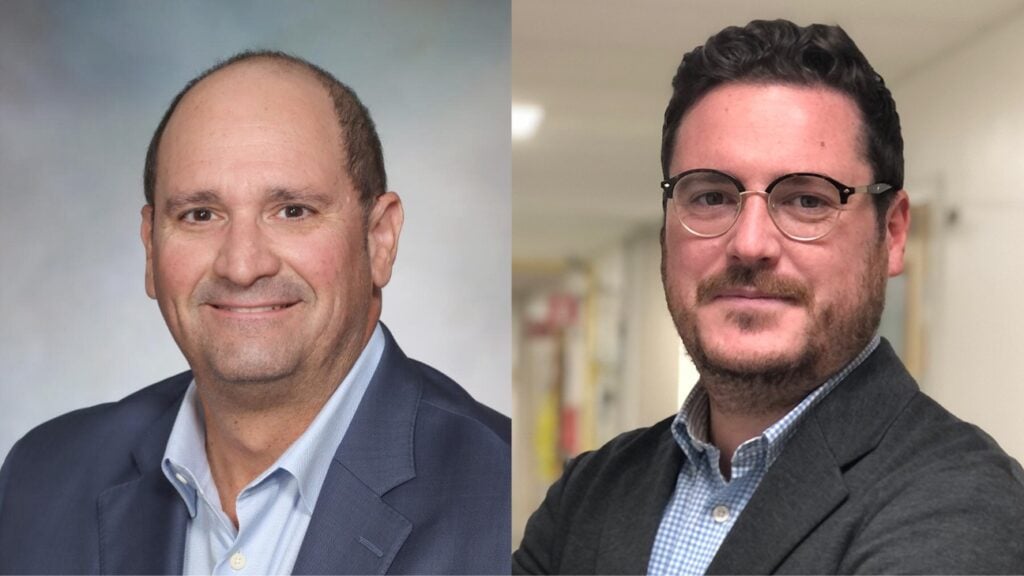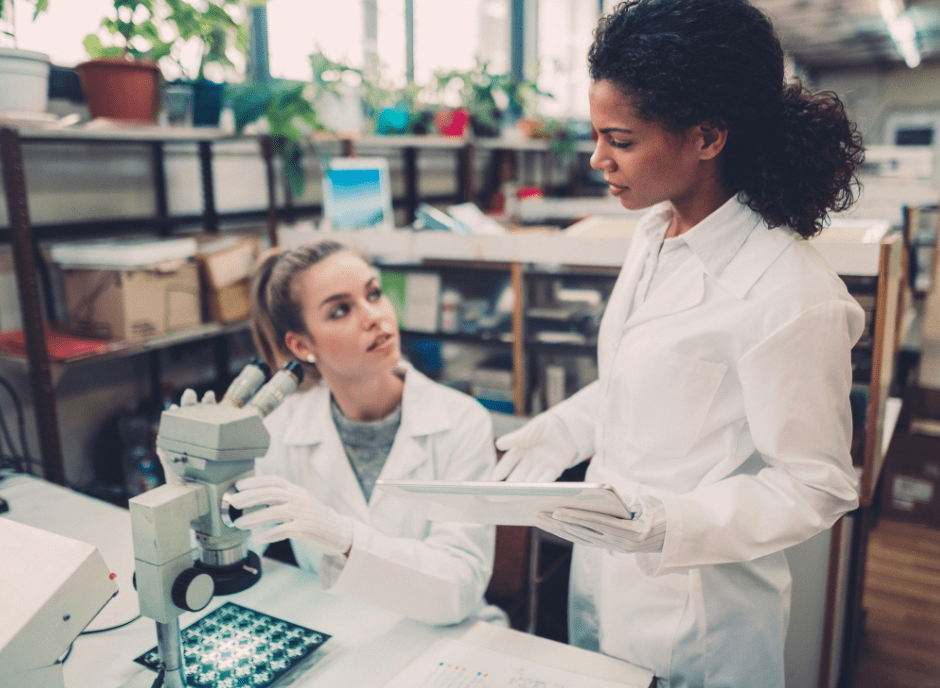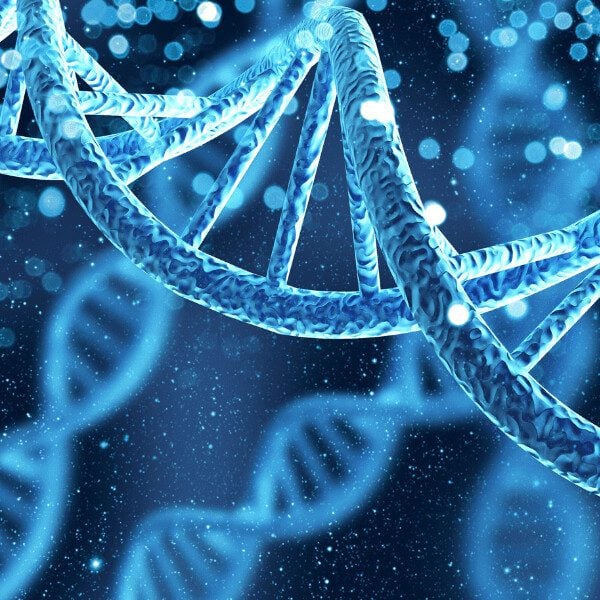
When Leonard Petrucelli and Nicholas Ashton first teamed up, it wasn’t just a meeting of scientific minds, it was a merging of purpose. One is a world expert on TDP-43 pathology; the other, a leader in assay development. Together, they’re tackling one of ALS research’s greatest challenges: how to track disease processes in the nervous system before it’s too late.
Their mission? Detecting “cryptic proteins”; tiny biological breadcrumbs that appear when TDP-43, a key player in ALS, malfunctions. If successful, their work could give researchers and clinicians something the field has long needed: a reliable, non-invasive way to monitor ALS progression and response to treatment in living patients.
The Trouble with TDP-43
TDP-43 dysfunction is involved in nearly all ALS cases, but it’s nearly impossible to detect directly in patients while they’re alive. “It’s elusive,” Petrucelli explained, “So instead of chasing the protein itself, we asked: what if we could track what it leaves behind?”
That’s where cryptic proteins come in. When TDP-43 activity is derailed, it allows fragments of genetic material called cryptic exons to sneak into messenger RNA, resulting in novel protein byproducts. As these cryptic proteins only appear under disease conditions, they could provide a way of tracking TDP-43 malfunction by proxy.
“This abnormal biology might actually work in our favor,” Petrucelli said. “If we can detect these cryptic proteins reliably, they could become biomarkers; tools that help us monitor the disease and evaluate therapies.”
Which cryptic proteins?
But TDP-43 has multiple targets – how do we decide which cryptic proteins to invest in? From a long list of candidates, two proteins stood out: HDGFL2-CE and IgLON5-CE. Feasibility to generate antibodies for these cryptic peptides is high, making them ideal targets for biomarker assay development. Their cryptic exons are genetically “in frame,” meaning they produce stable proteins. They’re long enough to prompt an immune response and, in IgLON5-CE’s case, the protein may even be secreted, making it more likely to show up in biofluids. Better still, preliminary data suggests these proteins appear in the same neurons asTDP-43 pathology in the brain and are further detected in cerebrospinal fluid (CSF).
“We’re not just measuring something that’s there,” Petrucelli said. “We’re measuring something meaningful. These proteins might even be contributing to the disease by triggering an immune response.”
From Discovery to Diagnostics
While Petrucelli’s lab focuses on antibody development, Ashton brings his expertise in turning biological discoveries into scalable, ultrasensitive tests. Having helped lead the charge toward the first FDA-approved blood test for Alzheimer’s disease, Ashton knows what it takes.
“People said a blood test for Alzheimer’s would never happen,” he said. “Now it’s here. That same playbook can help us speed progress for ALS.”
But detecting cryptic proteins is no small feat. The levels in blood or CSF are incredibly low, and the assays must be stable, reproducible, and sensitive enough to catch even faint biological signals. Ashton’s lab is testing a variety of platforms, from ELISA to next-gen techniques like NULISA, to find the right fit.
Toward Personalized ALS Care
So, what happens if this all works? A lot.
First, these biomarkers could help researchers stratify patients, distinguishing fast vs. slow progressors or identifying subgroups more likely to respond to certain therapies. Second, they could serve as early markers in genetic carriers before symptoms begin. And most importantly, they could offer a way to monitor the effectiveness of TDP-43-targeting therapies in real time.
“For neurologists, this wouldn’t replace diagnosis,” Ashton clarified. “But it could guide treatment, track progression, and, critically, show whether a drug is working.”
The Broader Impact
Although ALS is the team’s focus, the implications are broader. TDP-43 pathology is also seen in frontotemporal dementia and co-occurs in over 50% of Alzheimer’s cases. That makes these cryptic proteins a potential bridge across neurodegenerative diseases.
“The ALS field is leading the charge on TDP-43,” said Petrucelli. “And thanks to Target ALS, researchers like us can collaborate and accelerate discovery.”
By creating a space where researchers can exchange tools, ideas, and expertise across institutions and disciplines, Target ALS has cultivated what Petrucelli calls a “potent cocktail for success.” This kind of intentional community-building doesn’t happen by accident. It’s the result of years of trust-building, foresight, and leadership that recognizes one fundamental truth: breakthroughs happen faster when we work together. “It’s not just about the grants,” he explained. “It’s the framework for collaboration and connection.”
Ashton’s path to this collaboration was years in the making. “About four or five years ago, Target ALS reached out and asked if I’d help review biofluid proposals,” he recalled. “That was the start. They saw where the field was heading and began building the infrastructure early. From there, I started attending meetings, connected with Len, and now we’re working together on this project. It all started because Target ALS had the vision to invest in this space before it was crowded.”
Fueled by Partnership and Hope
For both scientists, collaboration is key. Their work is backed not just by shared expertise, but by trust, respect, and a commitment to making a real-world impact.
“We know our strengths,” said Petrucelli. “I make the antibodies. Nick builds the assays. That’s how science moves forward, together.”
They’re also driven by a deep belief in what’s possible. “We may not have the perfect biomarker yet,” said Ashton, “but we know what it looks like. And we’re getting closer.”
Thanks to their incredible work, Target ALS plans to distribute the antibody reagents broadly to the research community as they become available, ensuring that these tools accelerate discovery far beyond a single lab or project.
After years of starts, stops, and scientific fishing expeditions, that kind of clarity is more than progress, it’s fuel. For the labs. For the clinics. And most importantly, for people with ALS and families waiting for better answers.




